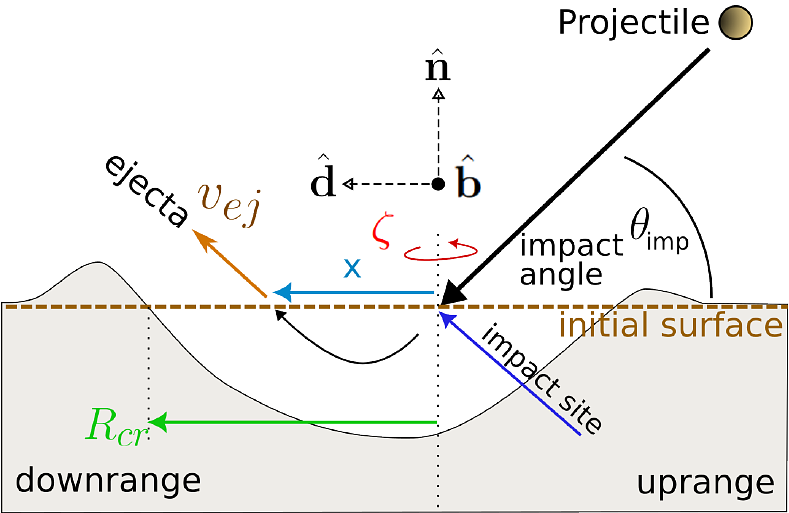Angular Momentum Drain: Despinning Embedded Planetesimals

Angular Momentum Drain: Despinning Embedded Planetesimals
Stephen Luniewski, Maggie Ju, A. C. Quillen, Adam E. Rubinstein
AbstractYoung and forming planetesimals experience impacts from particles present in a protostellar disk. Using crater scaling laws, we integrate ejecta distributions for oblique impacts. For impacts at 10 to 65 m/s, expected for impacts associated with a disk wind, we estimate the erosion rate and torque exerted on the planetesimal. We find that the mechanism for angular momentum drain proposed by Dobrovolskis and Burns (1984) for asteroids could operate in the low velocity regime of a disk wind. Though spin-down associated with impacts can facilitate planetesimal collapse, we find that the process is inefficient. We find that angular momentum drain via impacts operates in the gravitational focusing regime, though even less efficiently than for lower mass planetesimals. The angular momentum transfer is most effective when the wind speed is low, the projectile density is high compared to the bulk planetesimal density, and the planetesimal is composed of low-strength material. Due to its inefficiency, we find that angular momentum drain due to impacts within a pebble cloud does not by itself facilitate collapse of single planetesimals.